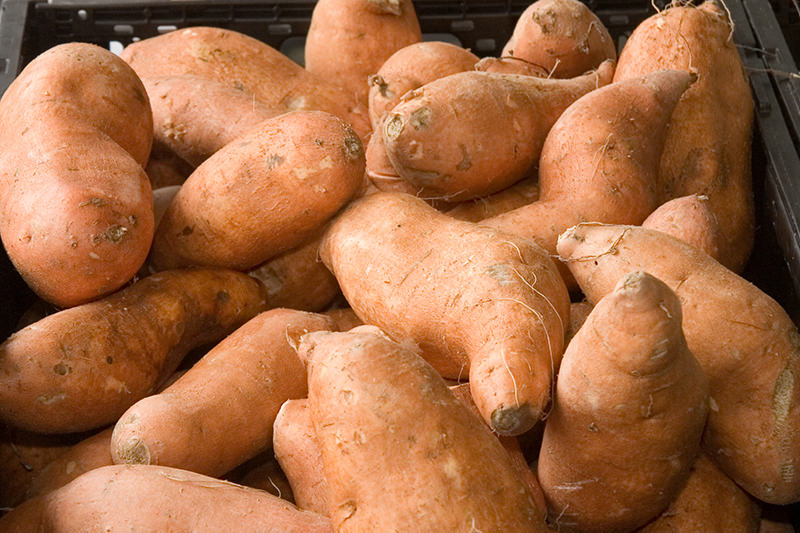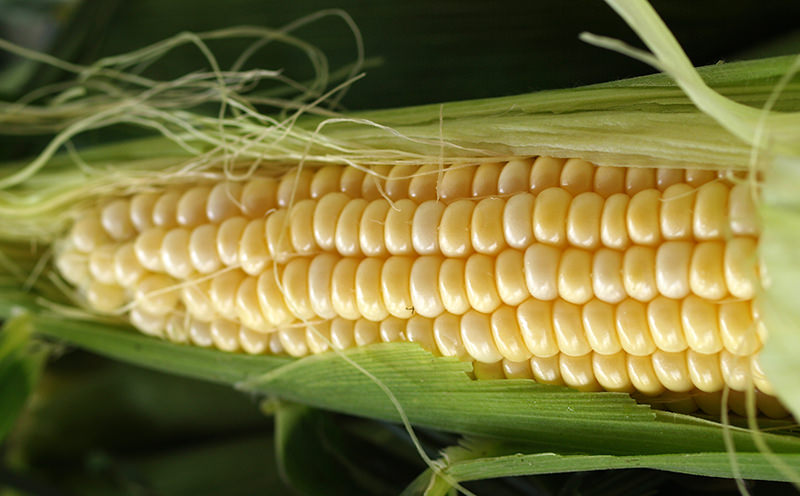
You hear it often: Someone will try gardening, fail miserably and determine that they weren’t born with a green thumb. But like writing, skiing, dancing or flying a plane, a green thumb isn’t a talent but a skill anyone can develop. Indeed, anyone can grow a garden, and the best way to develop the ability to do so? Start with the easy stuff.
It’s worth noting that professional growers kill plants, too. Some years are just better for crops than others. Before you look at this list and think, “But I’ve killed that and that and that,” remember that farmers who grow these plants for a living have, too. Don’t be discouraged by this list, but rather, use it as a guide. These are the fruits and veggies you should try and master first. Get them down, and other crops won’t seem so difficult.
1. Radishes
Why They’re Easy
Few crops go from seed to plate as fast as a radish—sometimes in as little as 25 days! Radishes are relatively pest-free in comparison to the rest of the cabbage family and rarely suffer from disease because they grow so fast.
Why People Fail
Radishes don’t mind warmer soil, but they don’t like hot growing periods. Directly seeding them into your garden in the early spring or late summer will ensure they don’t get pithy, too spicy or bolt as fast, which are the most common radish complaints.
2. Sweet Potatoes

Why They’re Easy
Sweet potatoes aren’t picky. They will grow in poor soil, as long as it’s loose and well drained. Given a long-enough growing season, they will pretty much grow themselves. Generally speaking, they should be planted in early June if possible. And as vigorous as they are, they will do at least some of the weed control for you.
Why People Fail
The challenge with sweet potatoes is that they go into the ground as tender young slips in the heat of the summer, so often people fail immediately by not planting them in the evenings or on cloudy days and by not watering them enough initially. The sweet potatoes also need to be kept weed-free until they take over—about a month and a half—so it’s best to get their spot in the garden as clean as possible first. Once established, sweet potatoes just need a spot weeding. Oh, and protect them from deer—a deer’s love of the greens will lead quickly to crop failure.
3. Tomatoes

Why They’re Easy
If you buy the plants, plant them somewhere sunny and support them, you will almost assuredly have tomatoes.
Why People Fail
If the soil is too cool or doesn’t drain property, the tomatoes will fail. They will not grow well in the shady backyard, either—a minimum of six hours of sunlight is essential but they prefer a lot more. Over-fertilization can likewise lead to disaster, leaving you with big beautiful plants and no fruit. There isn’t a whole lot you can do about blight—it happens to the best of us—but keeping the leaves dry by watering only at the base of plant can help. Maintaining healthy soil and buying your seeds or starts from a reputable source is the best recommendation I can give to avoid disease. And don’t overwater. Once the plants are established in the garden, they only need a little each week at the base.
4. Potatoes

Why They’re Easy
Potatoes do not have high nutritional needs, and thus, can be grown in any range of soil types. So long as there is a little compost and some loose, well-drained soil to grow in, potatoes will form. In fact, some people even grow them in bales of straw—it can’t get a whole lot easier than that!
Why People Fail
Any number of things can go wrong with potatoes, but they are all fairly avoidable or easy to get around. One easy way to fail with potatoes is to plant them too early, so the young potatoes rot or freeze. Potatoes should be planted four to six weeks before the average last frost date. Potato beetles are the other big factor in potato production. This prolific little pest will sneak in and rapidly decimate plants. If you catch them early, however—sometimes literally catch them, as their defense mechanism is to fall off the plant—and put them in soapy water, you shouldn’t have any long-term effects.
5. Sweet Corn

Why They’re Easy
Corn is fast, competitive, tall and vigorous. If you can get it germinated and growing in some well-fertilized soil, it will reward you handsomely.
Why People Fail
Crows and rodents love sweet corn. They will hammer it the second it starts to come out of the ground—sometimes even before. The best way to avoid this isn’t necessarily a scarecrow—crows are smarter than that. It’s row cover. Sow your corn, spread some mint leaves over the top to mask the smell, and then cover with a light sheet or light row cover. This will help keep the birds out, though, again, they’re smart, so you might need a scarecrow, too! Remove the cover once the corn is 2 or more inches tall—about a week. Then, once the ears start to form, put a fence around them or a dog to protect them from raccoons and other critters. Also, if it gets a worm at the top of the ear, just pull the worm off, but don’t throw the corn away. The ear worm doesn’t mean you failed, it just means you have to share some with the bugs.
6. Squash

Why They’re Easy
Squash plants, including zucchini, patty pan, pumpkins and butternuts, are vigorous and prolific plants. If given enough sunlight and compost, once established, they grow and produce like weeds. Tasty ones.
Why People Fail
Pests and disease love squash. I mean love it. My recommendation is not to buy starts, but to start your own by either direct seeding in the garden or starting them in cell trays so that you can plant more for your money. This may sound like a big job, but most squash germinate in just a few days. As you can keep them in a warm place, safe from rodents, they will pop up quickly. Plant squash immediately, as the cucurbit family hates to have their roots messed with—another reason people fail. Pop them into well-fertilized soil, cover with dirt, keep cultivated and you will have way more squash than you could possibly ever eat. Sorry.
7. Fall Crops

Why They’re Easy
Yes, all of the fall crops. Perhaps discouraged by summer failures, too few gardeners plant fall gardens. But the fall is far and away the easiest time to grow. Veggies like broccoli, cauliflower, kale, beets and carrots thrive in the cooler temperatures.
Why People Fail
Starting your plants too late can mean they don’t size up, especially with broccoli and cauliflower. Starting them too early can mean they get hammered with pests. This often happens because people often calculate days to maturity incorrectly in the fall, or don’t account for the fading sunlight. Generally speaking, add five to seven days to the maturity date on your seeds for every month past the summer solstice. So add one week if starting in July, two if starting in August, et cetera. That will help get the timing down and give you a bunch of fresh food for winter!




